DISCOVER THE ADVANTAGES OF THE HST METHOD
Rediscover the lost feeling of running your hand through your hair
Rediscover lost sensations and, at the same time, look new, well finished and winning aspect
HAIR STEM CELL TRANSPLANTATION
Hair transplant for men
Hair loss frequently leads to psychological problems, especially in youthful men. Fortunately, we have the optimal result for every type of problem, whether it be thin hair, setback, hair loss at the temples, a bald crown, or bald spots in the beard. A hair transplant with our personalized system offers an effective result for your baldness.
To determine if the entire area is suitable for hair transplantation, it’s necessary to estimate the stage of baldness and the condition of the area or, understand if it’s heritable baldness or caused by other reasons. Getting the right opinion is important when deciding on treatment based on the results you want to achieve.
Request a particular discussion with our specialist to admit all the information to decide and estimate the stylish result for your case.
THE SOLUTIONS
Baldness of man
RETREATING HAIRLINE AND LOSS AT THE TEMPLES
Hair loss at the temples is frequently the first sign of baldness in men. These prints ahead and after the treatment show that the original hairline can be restored with a hair transplant. This system restores the look but not the full content of the hair. Whether the entire area can be treated depends on the stage of baldness and the condition of the patron area.
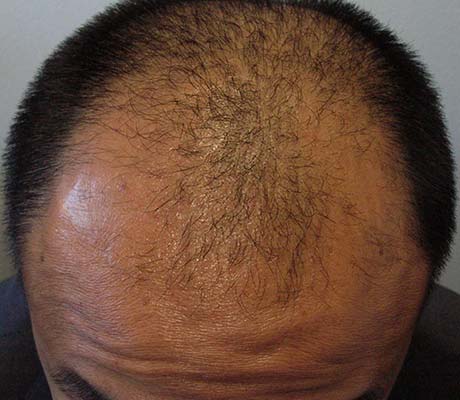
Before the treatment
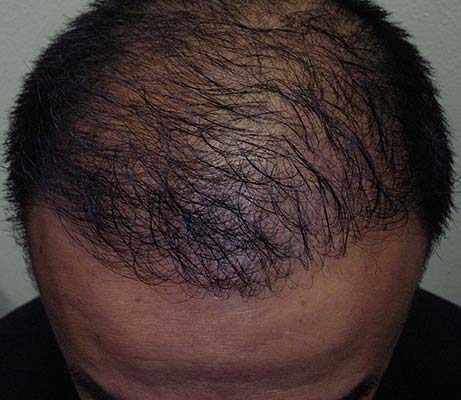
9 months after treatment with 1,280 grafts
NATURAL HAIRSTYLE
We are very focused on the original hairline.
A common mistake is creating a hairline that looks unnatural or too sharp and doesn’t fit the face well. That’s why we discuss your ideal hairline with you before treatment. We can create the most natural hairline for your face.
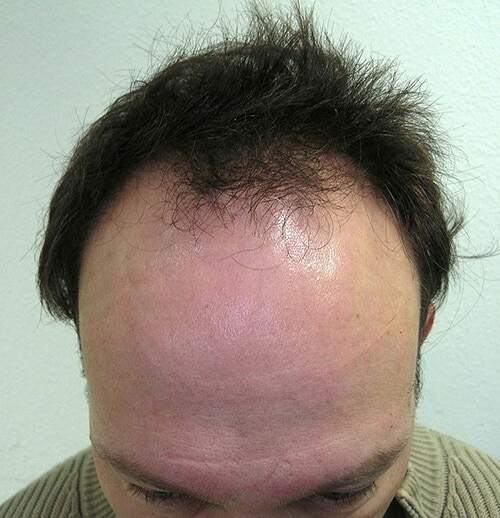
Before the treatment
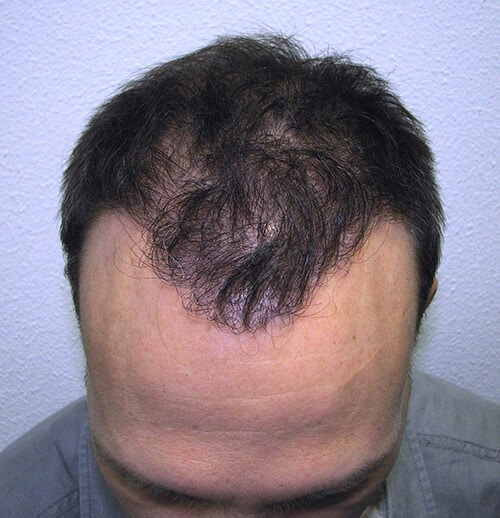
9 months after treatment with 2,490 grafts
A POSITIVE EVALUATION
Patient-Related Outcome Measures-PROM is extremely important in medical treatments.
A PROM is a patient-related outcome of a treatment. A study of patients who were treated with the HST method revealed that their quality of life improved immediately after treatment.
In addition to the proven cosmetic result, this improvement is important for people considering having a hair stem cell transplant.
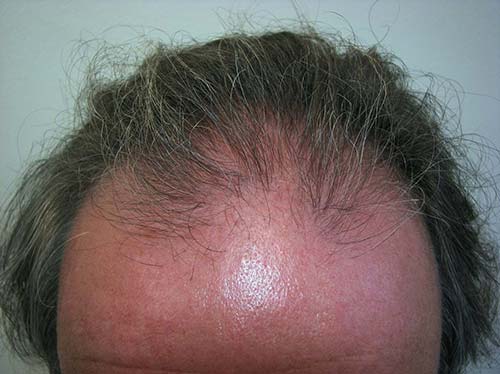
Before the treatment
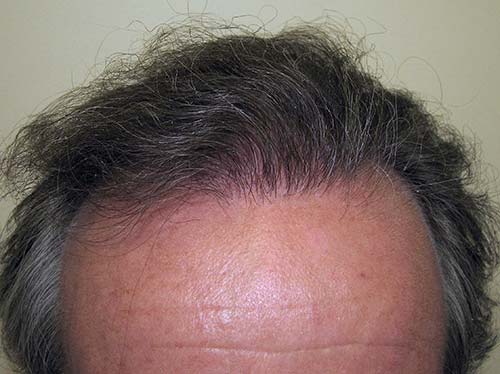
9 months after treatment with 1,240 grafts
BEARD TRANSPLANT
Do you have bald spots on your beard? Or your beard and moustache aren’t growing well and you want more fullness? We can solve the problem. The HST method is also suitable for facial treatments. Almost no scarring is left, which makes this technique more suitable than traditional hair transplant methods.
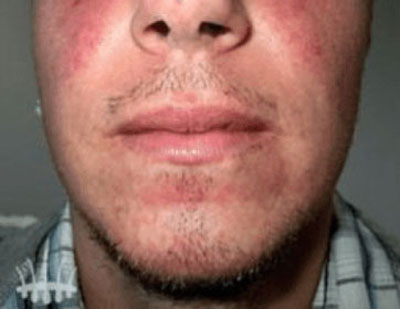
Beard and mustache before treatment
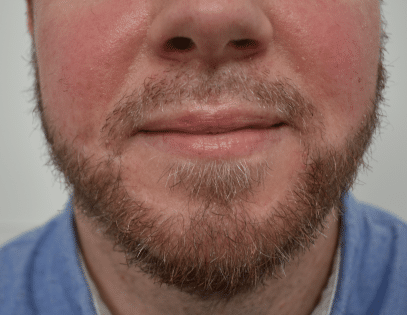
Beard and mustache after treatment
HOW TO CONSULT
Discover the tailor-made solution
Recommendations are very useful to you and us. You will discover the technology, get personal advice and have the opportunity to ask questions.
You can discuss your options, wishes, and expectations in detail with your doctor.
An individual treatment plan is then developed specifically for your specific situation.
Hair transplant for men in Lausanne / Switzerland
The life of hair is characterized by three phases: growth, then a period of transition and of and fall. The length of the cycle varies from one to another ,usually, it lasts between two and seven years. Depending on the type, there ar around 140,000 for a blonde person, 100,000 for brunettes, 90,000 for redheads. Hair follicle carry between one and four hairs, on average a bulb produces about 20 hairs in its lifetime.
Areas of the head prone to hair loss in men
From a genetic point of view, only certain parts of the scalp are prone to hair loss. The parts mos likely to fall off are the temples, the top of the head and sometimes the head. The nape of the neck and the lower part of the temples are subject to hair loss. Areas of hair loss are presented in a print called the NORWOOD scale.
Causes of hair loss in men
The first symptoms of hair loss appear at the age of twenty and increase in the thirties. The consequences are aesthetic as well as psychological in some cases. ANDROGENETIC ALOPECIA is the cause of hair loss and its genetic and hereditary. It has to be searched in the maternal ancestry if any have been affected by hair loss. This alopecia is caused by the reduced ability of 5-alpha-reductase, DHT, to synthesize the androgen hormone dihydrotestosterone. Hair loss is also caused by dysfunctional sebaceous in sebum production.
Dandruff is hormonal deregulation typical of adolescence. When the sebum soaks the dandruff it can provoke the atrophy of the bulb. Stress ALOPECIA is another cause of hair loss; stress is also thought to cause dysregulation as we have already seen. Additionally, stress can lead to hair manipulation and thus ultimately hair loss. ALOPECIA results from dietary deficiencies in particular for keratin synthesis, which occurs when food is deficient in protein and amino acids. Like chemotherapy, some medical treatments cause temporary hair loss
Transplantation techniques
There are different hair transplant techniques. Those who take the bulb from the donor area and transplant it into the recipient are simply moving the same follicle from A to B. The HST Hair stemcell technique is the technique that regenerate the follicolar units in the donor area making them as prior to the treatment. In this wa the hairs are multiplied in number if necessary an multiple grafts can be performed in time without exhausting the donor area.
FUT (Follicular Unit Transplantation)
FUT (Follicular Unit Transplantation) is realised in the operating room where a strip of scalp is taken from the donor area. When the suture is done, a scar will be generated and i twill remain evidente with the short hair. It is a technique which must be carried out by experienced people, and therefore it is costly due to the use of operators and qualified surgical personnel. It is real surgery.
FUE (Follicular Unit Extraction)
With FUE (Follicular Unit Extraction), follicular units are harvested from the donor area with circular scalpels. The extraction can be done, either by hand or mecanically with a robot. Depending on the type of scalpel used, damage may be caused to the removed follicles or nearby follicles. This affects the regrowth percentage of the transplanted hair. Each extraction corresponds to a small scar. Those scars can cause fibrosis of the scalp skin which hardens, and limit the number of subsequent transplants. This technique is often practiced by novice doctors of less qualified personnel.
The health regulations of each country allow operators to intervene: for Swiss only qualified nursing medical personnel is authorized. In Turkey and other foreign countries with low regulations are less demanding and unsuitable operators may pose a risk to the patient. The economic impact of operations that do not comply with the most demanding health rules is certainly lower than that of FUT or FUE performed in Switzerland. It is therefore necessary that the uninformed patient investigate the financially very low proposals for all the risks that may occurr.
HST (Hair Stemcell Transplantation)
HST (Hair Stemcell Transplantation) also called PL-FUT . This innovative and patented technique, resulting from the research of the Dutch Conradus Chosal Gho, consists of a partial extraction of the hair bulb. Specially designed surgical instruments measuring 0.5/0.6 millimeters are utilised. The partial extraction contains only a minimum quantity of tissue: the stem cells that will generate the regrowth are exposed and present both in the partially extracted part as well in the part remaining in the epidermis. The part not removed from the bulb regenerates exactly the same as before the operation. In contrast, the harvested portion has the stem cells directly exposed to the environment. The sample is immersed in a patented medicine complex: to allow it to survive, the sample is otherwise free of adipose tissue and therefore extremely thin.
This patented medium, which contains among other exosome medicinal components, gives the specimen the strength and energy to survive and take root in the recipient area. The survival rate of this type of very high graft between 95 and 98%. The bleeding is extremely low, the incisions of 0.5 allow a very close and very natural density. No bandaging is done at the end of the operation, unlike all other techniques.
Telephone
+41 79 892 23 77
Where we are
LAUSANNE
consult@hasci-swiss.com
